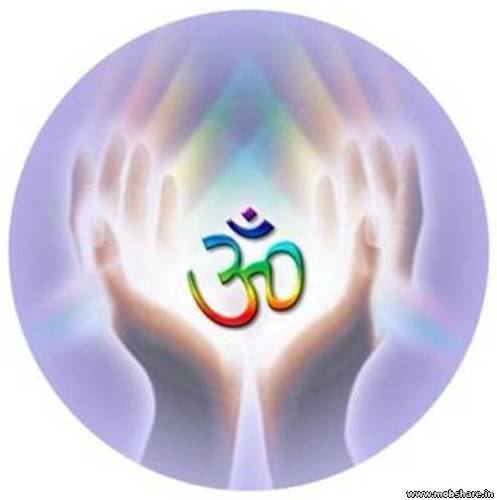 The Purpose of Bhagavad Gita
The Purpose of Bhagavad Gita
The purpose of Bhagavad Gita is to deliver mankind from the darkness of material existence. Every one of us is in difficulty in so many ways. Just as Arjuna was in difficulty because of having to fight the battle of Kuruksetra. Arjuna surrendered to Krishna and consequently the Bhagavad Gita was spoken.Not only Arjuna, but every one of us is full of anxieties because of this material existence. We are trying to exist here in the material world but the atmosphere of the material world is nonexistence. Actually we are not meant to be threatened by nonexistence. Our existence is eternal. But somehow or other we have been put into this temporary material world and because of this we are threatened with nonexistence.
Out of so many human beings who are suffering, there are only a few who are actually enquiring about their position, questioning what they are, why they are put into this difficult position, and so on. Unless one comes to this point of questioning his suffering, unless he realizes that he does not want to suffer, but rather he wants to find a solution to the suffering, then he can not be considered a perfect human being. Human life begins when this sort of enquiry is awakened in one’s mind.
Those who have come to this awakened position of questioning why they are suffering and who have realized they do not want to suffer, they want a solution to the suffering, are the proper students for understanding Bhagavad Gita. To be successful the sincere student should also have a firm respect for the Supreme Personality of Godhead. Arjuna is the perfect example of such a qualified student of the Bhagavad Gita.
The reason Krishna comes to the material world is specifically to re-establish the real purpose of life when mankind in general has forgotten this purpose. Krishna is very merciful to us, it is out of His mercy that He spoke the Bhagavad-gita, making His friend Arjuna the first student.
As Arjuna was an associate of Krishna he was above all ignorance. But just so Krishna could speak the Bhagavad Gita to him Krishna put Arjuna into ignorance on the battlefield of Kurukshetra so that he would question the Lord about the problems of life so Krishna could answer these questions and explain everything for the benefit of future generations of human beings. With this knowledge given by Krishna to Arjuna on the battlefield men can act accordingly and perfect their mission of human life.
The Subject of Bhagavad Gita
The subject matter of Bhagavad Gita explains the science of God by covering five basic truths:- The controller [isvara]
- The living entities [jivas]
- Material Nature [prakrti]
- Time [kala, the duration of existence of the whole universe]
- Activity, work [karma]
So in the Bhagavad Gita the subject matter deals with the isvara, the supreme controller and the jivas, the controlled living entities, prakrti (material nature) and time (the duration of existence of the whole universe or manifestation of material nature) and karma (activity).
From Bhagavad Gita we can learn what God is, what the living entities are, what prakrti is, what the cosmic manifestation is and how it is controlled by time and what the activities of the living entities are.
In the Bhagavad Gita it is established that Krishna, the Supreme Godhead, Brahman or supreme controller or Paramatma–you may use whatever name you like–is the greatest of all. We living entities are in quality like the supreme controller. For example Krishna is the supreme controller. He has control over the universal affairs, over material nature as will be explained in later chapters of Bhagavad Gita. Material nature is not independent, she is working under the direction of the Supreme Lord. So we, the jivas, or living entities are accepted as being part and parcel of the supreme controller, isvara, Bhagavan, Lord Krishna, and as such the living entities have all the qualities of the Supreme Lord in minute quantities. A particle of gold is also gold. A drop of water from the ocean is also salty, similarly we the living entities, being part and parcel of the supreme controller, have all the qualities of the Supreme Lord in minute quantity, because we are minute isvaras, subordinate isvaras. We are trying to control nature, and this tendency to control is in us because it is in Krishna. But although we have the tendency to lord it over the material nature, we should know that we are not the supreme controller. This is explained in Bhagavad Gita.
The world revolves because every living being thinks that he is the lord and creator of the material world. Material consciousness has two psychic divisions. One is that “I am the creator,” and the other is that “I am the enjoyer.” But actually the Supreme Lord is both the creator and the enjoyer, and the living entity, being part and parcel of the Supreme Lord is neither the creator nor the enjoyer , but a cooperator. He is the created and the enjoyed. For instance a part of the machine cooperates with the whole machine; a part of the body cooperates with the whole body. The hands, feet, eyes, legs and so on are all parts of the body, but they are not actually the enjoyers. The stomach is the enjoyer. The legs move, the hands supply food, the teeth chew and all parts of the body are engaged in satisfying the stomach because the stomach is the principle factor that nourishes the body’s organization. Therefore everything is given to the stomach. One nourishes the tree by pouring water on the root and one nourishes the body by feeding the stomach.
Similarly, the Supreme Lord is the enjoyer and creator and we, as subordinate living beings, are meant to cooperate to satisfy Him. This cooperation will actually help us, just as food taken by the stomach will help all other parts of the body. If the fingers of the hand think that they should enjoy the food themselves, they will be frustrated. The central figure of cooperation and enjoyment is the Supreme Lord, and the living entities are cooperators. By cooperation they enjoy. The relation is also like that of the master and the servant. If the master is fully satisfied then the servant is satisfied. Similarly the Supreme Lord should be satisfied although the tendency to become the creator and the tendency to enjoy the material world also are there in the living entities because these tendencies are also in the Supreme Lord who has created the manifested cosmic world we see before us.
We shall find, therefore, in the Bhagavad Gita, that the complete whole is comprised of the Supreme Controller, the controlled living entities, the cosmic manifestation, eternal time and karma, activities and all of these are explained in the Bhagavad Gita. All of these items taken together completely form the complete whole, and the complete whole is called the Supreme Absolute Truth. The complete whole and the complete Absolute Truth are the Supreme Personality of Godhead, Sri Krishna. All manifestations are due to His different energies. He is the complete whole.
The Essence of Vedic Knowledge
Bhagavad Gita is the essence of all Vedic knowledge. Vedic knowledge is not a question of research. Our research work is imperfect because we are researching things with our imperfect senses. Bhagavad Gita states that we have to accept perfect knowledge which comes down by parampara, disciplic succession, beginning with the supreme spiritual master, the Lord Himself, and handed down to a succession of spiritual masters.Arjuna, the student who took lessons from Lord Sri Krishna, accepts everything that He says without contradicting Him. One is not allowed to accept one portion of Bhagavad Gita and not another. No. We must accept Bhagavad Gita without interpretation, without deletion and without our own whimsical participation in the matter.
The Gita should be taken as the most perfect presentation of Vedic knowledge. Vedic knowledge is received from transcendental sources and the first words were spoken by the Lord Himself. The words spoken by the Lord are different from the words spoken by a person of the mundane world who is infected with four defects. A person of the mundane world is sure to:
- Commit mistakes
- Is invariably illusioned
- Has the tendency to cheat others
- Is limited by imperfect senses.
Vedic knowledge is not imparted by such defective living entities. It was imparted unto the heart of Brahma, the first created living being in this universe and Brahma in turn taught this knowledge to his sons and disciples as he originally received it from the Lord.
All of this, and much more, is clearly described in Bhagavad Gita and if we properly utilize the instructions of Bhagavad Gita then our whole life will become purified, and ultimately we will be able to reach the destination which is beyond this material sky.
The ultimate destination is called the sanatana sky, the eternal spiritual sky. In this material world we find that everything is temporary. It comes into being, stays for some time, produces some by-products, dwindles and then vanishes. This is the law of the material world, whether we use as an example this body, or a piece of fruit or anything. But beyond this temporary world there is another world of which we have information. This world consists of another nature which is sanatana, eternal, and the Lord is also described as sanatana in the Eleventh Chapter. We have an intimate relationship with the Lord and because we are all one–the sanatana-dharma or sky, the sanatana Supreme Personality and the sanatana living entities–the whole purpose of Bhagavad Gita is to revive our sanatana occupation, or sanatana-dharma, which is the eternal occupation of the living entity. We are temporally engaged in different activities, but all of these activities can be purified when we give up all these temporary activities and take up the activities which are prescribed by the Supreme Lord. This is called our pure life.












No comments:
Post a Comment